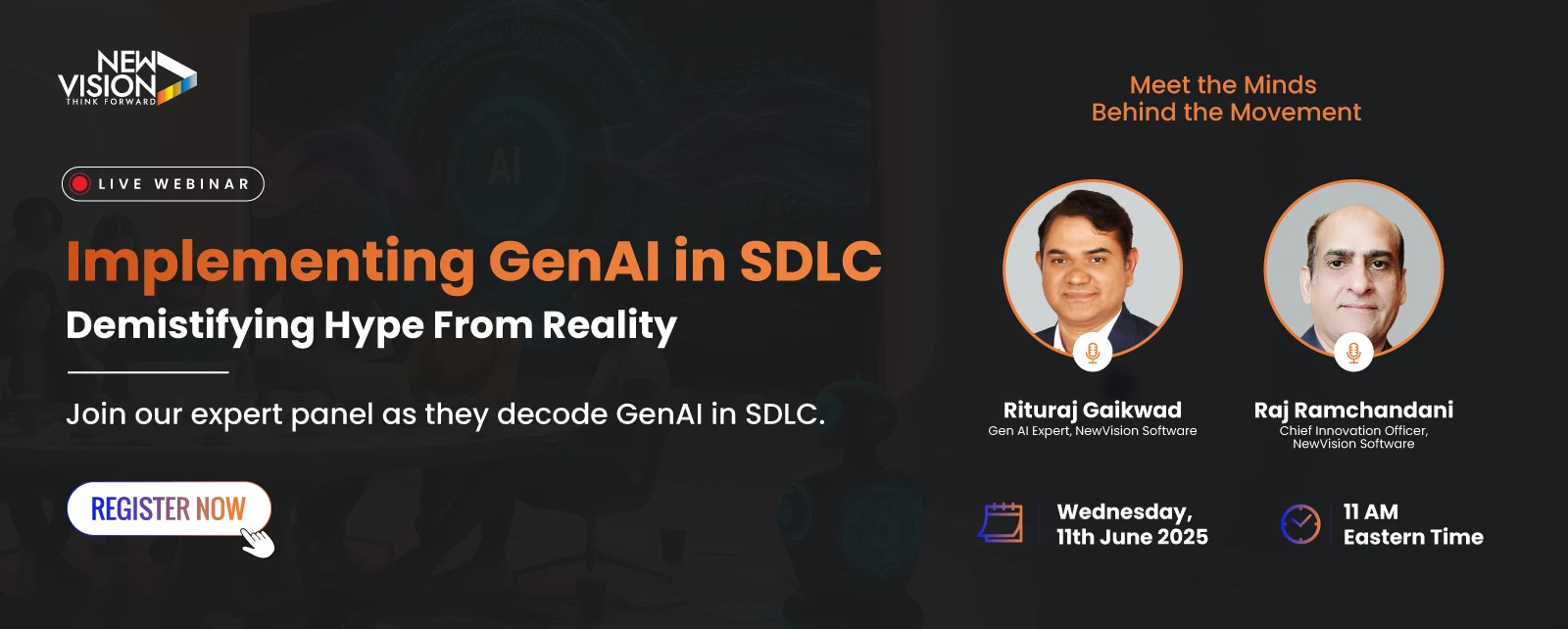
Recent research finds that GenAI is empowering software developers with disruptive capabilities to complete coding tasks twice as fast. GenAI-based tools are bolstering speed in several areas such as documenting code functionality; writing new code and optimizing existing code in nearly half the time compared to when developers are working without such tools.
More importantly, GenAI is improving developer satisfaction—by taking care of repetitive and tedious aspects of developing, GenAI is allowing coders to spend more time on creative and fulfilling tasks—50% developers were happy using GenAI tools, 31% stated they could do more meaningful work and 41% developers found themselves in a state of flow when using GenAI tools.
Best-in-class companies are already harnessing GenAI capabilities to accelerate software development activities. According to Capgemini Research, 67% of surveyed organizations believe that GenAI will have the greatest impact in IT functions, driving value creation and innovation.
This is leading to massive investments in AI-led software development. Forrester estimates that spending in custom AI and off-the-shelf AI software will grow at 50% the rate of the overall software market between 2021 and 2025.
The Transformative Shift in Software Engineering with GenAI
As digital penetrates, winning companies are striving to differentiate with AI-driven software to deliver new and better experiences. The race to outpace competition with quality software has put tremendous pressure on software organizations and embrace new technologies and software development approaches such as Agile, DevOps, automation of code integration, testing and deployment practices; cloud native and composable architectures and low-code-no-code. Yet software organizations are still struggling to reduce technical debt and deliver quality output at speed.
GenAI has shown early promise in empowering coders with better, faster code development. Key areas in which GenAI can have a transformative impact on software engineering practices include the following.
Assisting Business Analysis: GenAI is helping business analysts, product owners and business users identify needs, understand it accurately and translate that need into actionable user stories. It helps to resolve inconsistencies and remove ambiguities by prioritizing needs, defining an implementation roadmap and ensuring consistent communication amongst stakeholders. Most importantly, NLP features ensure that user stories of all stakeholders are effectively captured.
Accelerating design and coding: GenAI is facilitating software developers in designing and coding including UI, entity models, microservices and API to create faster and more accurate software architectures. Research finds adoption of GenAI is at an early stage with 11% using it for software development purposes with a slated penetration of 25% by 2026 for software design, development and testing. This is triggering a profound shift in development practices where there is a clear shift from coding to prompt engineering. Software engineers can simply describe the functionality required, and the GenAI program will generate an output. Just as a developer can initiate a code and the GenAI program will autocomplete to accelerate the development process. It assists coders through intelligent code refactoring suggestions, and automated review.
Optimizing test design and QA: Incomplete or deficient testing is a major cause of software bugs and failure. GenAI enhances the quality assurance process and bolsters productivity by generating comprehensive test cases and test scripts by evaluating acceptance criteria and known uncertainties to streamline acceptance testing and fine-tune the overall QA process.
Managing test data is a critical challenge, from ensuring coverage to maintaining data integrity and security. GenAI streamlines this process by efficiently managing test data, generating high-quality synthetic datasets, and minimizing risks—enhancing both test coverage and application security. By 2025, Gartner predicts 20% of all test data will be synthetically generated. However, adoption remains low, with test case generation at 26% and coding assistance being the most widely used application at 39%, indicating that most organizations are still in the early stages of leveraging AI for software testing.
Benefits of GenAI in Software Development
As compared to traditional approaches in software development, GenAI based development platforms are reducing the time by as much as 50% according to some research.
One of the most disruptive capabilities of GenAI is NLP or conversational capabilities which enables coders and even business users to simply describe the requirement, without learning any coding language. The system can listen and understand the intent and context to create applications or suggest workflows, personas, and data models based on industry best practices. This process lowers the barriers in software development enabling business users to participate in the development process. Specifically, the benefits of GenAI in software development include the following.
- Conversation-based approach in software generation which allows users to interact with the system in natural language. The system returns a solution or suggest an application design based on the description of a requirement or functionality.
- AI-driven optimization of workflows, data models, and application components wherein humans interact with GenAI models to design intelligent automation, optimize workflows, refine data models, and enhance application components through iterations, monitoring and seamless decision-making.
- GenAI driven software development accelerates time-to-market by enabling prototyping in real-time, rapid deployment, and continuous improvement by leveraging GenAI powered automation through the SDLC. Real-time prototyping enables developers to generate code, UI mock-ups, and system architectures instantly while rapid deployment is facilitated through AI-assisted CI/CD pipelines with continuous improvement driven AI-driven analytics based on user feedback and performance monitoring.
- Enhanced collaboration between technical and business teams by translating business requirements into technical specifications and vice versa with an overwhelming 78% developers citing it as a benefit of GenAI. It bridges the gap between teams by automatically generating documentation, user stories, and code snippets from business inputs, ensuring stakeholders can clearly articulate requirements while developers get a more precise understanding.
NewVision as a Software Development Partner using Advanced GenAI Capabilities
NewVision Software has been leveraging cutting-edge technologies in the SDLC to service customers with high-quality software products. From requirement gathering through testing and delivering continuous improvements, we employ GenAI to enhance productivity and faster time to market.
NewVision employs AI-driven Co-Pilots powered by LLMs and deep contextual understanding wherein co-pilots work along-side software engineers to accelerate development cycles. By integrating AI-driven automation in requirement gathering and testing along with intelligent code generation, we empower businesses with smarter, personalized, and high- quality software products.
NewVision has also established Vision Lab which drives GenAI innovation within the company. The Labs has completed POCs in key applications including customer service, AI copilots, content generation, and document intelligence. By integrating leading LLMs in software development capabilities we help businesses stay ahead in an increasingly AI-driven world and remain a trusted partner in driving the next wave of AI adoption.
Harnessing GenAI Smartly
Even as GenAI empowers developers with disruptive capabilities, it is important to understand that it is a tool and must be used to complement developer capabilities. It excels in laborious tasks such as documentation, code review, keeping track of change requirements, requirement validations, etc.
Employing GenAI in development without a well-defined software architecture will create future challenges such as code repeatability and scalability. A well-defined structure will ensure the software is future-proof and meets with compliance requirements, while embedding standardized best practices for enhanced software quality.
Software organizations will do well to have a structured approach in adopting GenAI. This must start with a culture of learning wherein developers are sensitized about the nuances of the tool and trained to utilize it effectively. For example, prompt engineering is a key skill that determines the outcome of software quality and invest in imparting new skills.
Over time, GenAI assisted software development will replace traditional approaches, wherein team members will be assisted at various stages allowing them to focus on creative and specialized tasks. GenAI is redefining software development and will fundamentally change industry practices. A strategic approach to adoption is imperative as early adopters will reap the advantage for competitive advantage while those slow to adapt risk falling behind in an increasing AI-powered landscape.
Hear NewVision’s GenAI Experts in a Live Webinar
 In an exclusive webinar on June 11, 2025, NewVision’s experts will throw light on proven strategies and approaches in implementing GenAI in the SDLC, illustrating with use cases and customer success stories. Learn how you can amplify the human and machine efforts. Understand where GenAI is driving meaningful outcomes and where human oversight and strategies are essential.
In an exclusive webinar on June 11, 2025, NewVision’s experts will throw light on proven strategies and approaches in implementing GenAI in the SDLC, illustrating with use cases and customer success stories. Learn how you can amplify the human and machine efforts. Understand where GenAI is driving meaningful outcomes and where human oversight and strategies are essential.
Register today to join an interactive session that separates the hype from reality and unlocks the future of software development. Clear your doubts from GenAI practitioners and get an early advantage in accelerating your development efforts.


